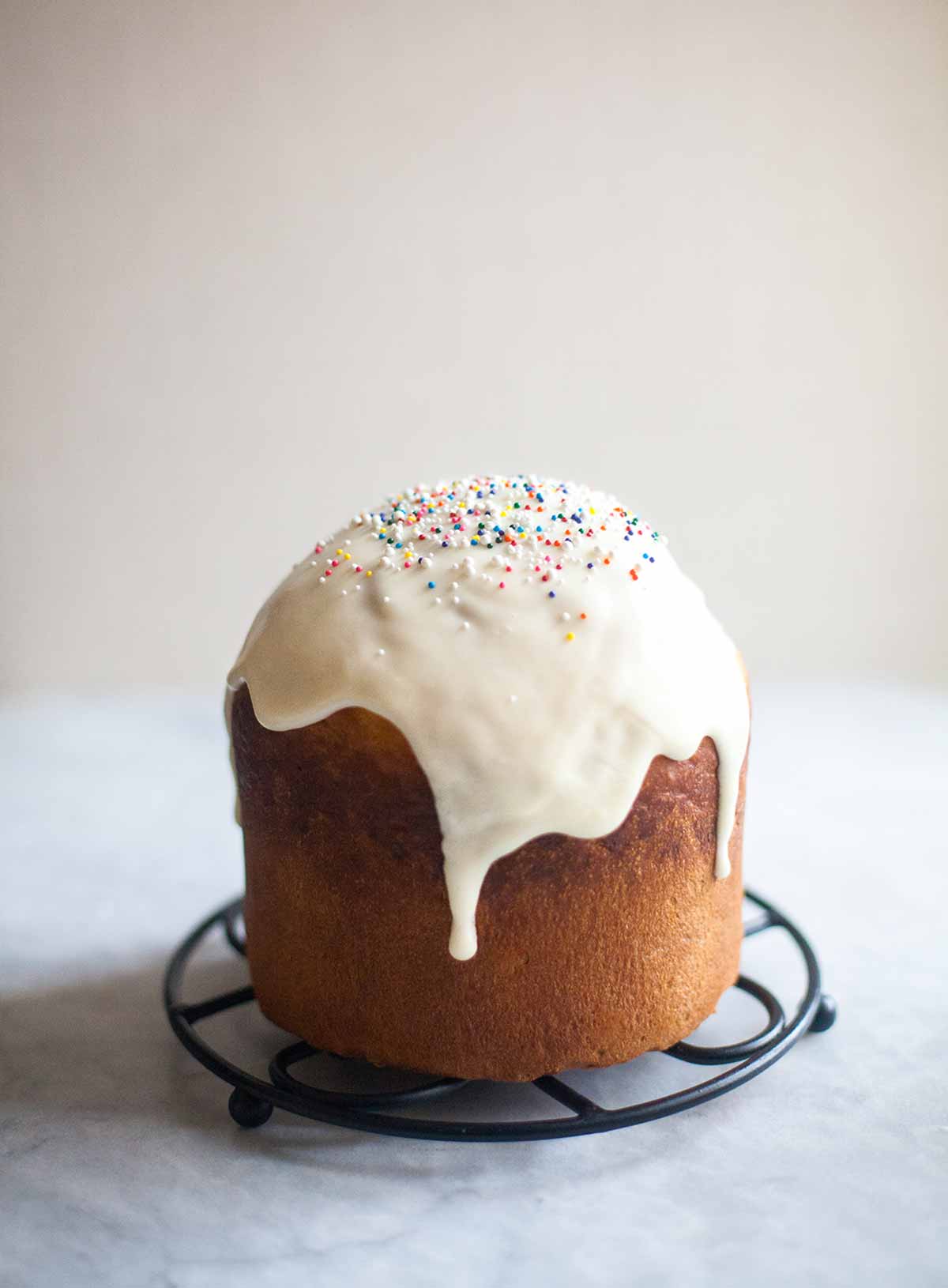
Rich, buttery, and impressive as all get out, Kulich is a traditional Easter bread in parts of Eastern Europe. Its towering stature and its dome bedecked with icing and sprinkles make it instantly recognizable, but we think its the hint of cardamom and saffron along with its dreamily delicate texture that leave the most lasting impression. The dough is a cinch to pull together ahead of time, making this a welcome recipe for Easter or any morning that could use some last-minute sweetness made with ease. The dough recipe will yield about twice as much as you’ll need for a single kulich. Leftover dough can be refrigerated for up to 5 days and used for additional loaves or smaller buns.–Jenny Howard
Kulich FAQs
Kulich, an Easter bread enjoyed around Eastern Europe and Russia, can be recognized by its tall base and rounded top, as well as a generous coating of sugar glaze. Some say that the overflowing muffin top of this bread represents the dome of a church. In the Russian Orthodox tradition, kulich is surrounded by flowers and receives a special blessing at midnight mass before Easter Sunday. This dough is lightly flavored with saffron, an exotic spice that traditionally would have only been used on special occasions. To get the traditional shape, the bread needs to be baked in a cylindrical mold, a coffee can, or a paper panettone mold.
Essentially, yes. While there are recipe variations of both kulich and paska, they are both traditional Eastern European bread, with similar (if not the same) ingredients that are served around Easter. Both delicious and indicative of the holiday, kulich originated in Russia and the word means “a roll of bread”, while in Ukraine, paska means “Easter”.
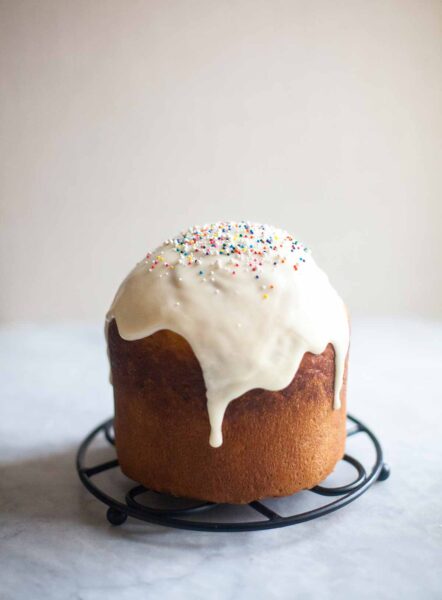
Kulich
Equipment
- 1 large panettone mold (6- to 7-inch | 15- to 18-cm diameter) or 1 empty #10 coffee can (3-pound | 1.5-kg capacity and 6 1/4-inch wide by 7-inch tall|16 cm by 18 cm), rinsed and dried
Ingredients
For the saffron dough
- 1/2 cup water
- 1/2 teaspoon saffron threads
- 1 1/2 cups whole milk
- 1/2 cup full-fat plain Greek yogurt or quark
- 3 large eggs
- 1 tablespoon instant yeast
- 1 tablespoon kosher salt
- 1/3 cup granulated sugar
- 1/2 teaspoon ground cardamom
- 6 1/4 cups bread flour
- 1/4 cup potato flour* (see NOTE below)
- 1 stick unsalted butter, melted
For the kulich
- Butter for the panettone mold or coffee can
- 2 pounds saffron dough
- All-purpose flour, for dusting
- 1 large egg, beaten with 1 tablespoon cold water for glaze
For the icing
- 1/2 cup confectioners’ sugar
- 2 tablespoons heavy cream, plus more as needed
- Colorful sprinkles (optional)
Instructions
Make the saffron dough
- In a 5-quart (5-liter) bowl or other large container or in the bowl of a heavy-duty stand mixer, stir together the water, saffron threads, milk, quark or Greek yogurt, eggs, yeast, salt, sugar, and cardamom.
- In a medium bowl, whisk together the all-purpose flour and the potato flour. Use a wooden spoon or the paddle attachment of the stand mixer to blend the flours and the melted butter into the saffron mixture until a soft dough forms. It’s not necessary to knead the dough.
- Loosely cover the bowl or container (do not seal it airtight) and let the dough rise for 2 hours at room temperature until it nearly doubles in size. Refrigerate, still loosely covered, for at least 3 hours or up to 5 days.
Make the kulich
- Generously butter a panettone mold or coffee can. Dust the surface of the refrigerated dough with flour and cut off a 2-pound (910 g) piece. (Return the rest of the dough to the refrigerator for up to 5 days and use for additional loaves or smaller buns.) Place the dough on a lightly floured surface and quickly shape it into a ball by stretching the surface of the dough around to the bottom, rotating the ball a quarter-turn as you go. Place the ball in the buttered panettone mold or coffee can, seam side down.
- Cover the dough loosely with plastic wrap and let it rest at room temperature until nearly doubled in size, about 90 minutes.
- Preheat the oven to 350°F (180°C) and adjust the rack to the center of the oven.
- Lightly brush the top of the dough with the egg glaze. Bake until golden brown and a tester comes out clean, 45 to 55 minutes, depending on the size of your mold or coffee can.
- Carefully set the mold or coffee can on a wire rack to cool completely.
Make the icing
- In a bowl, stir together the confectioners’ sugar and heavy cream until smooth and thick enough to cling to the cake. If necessary, dribble in some additional cream, a little at a time, until the icing is pourable but still quite thick. You don’t want it to drip too far down the sides of the loaf.
Assemble the kulich
- Remove the cooled loaf from the mold or coffee can and drizzle the icing over the top. Decorate with colorful sprinkles, if using.
Notes
*What Is Potato Flour And Do I Really Need It?
The dough for this kulich bread incorporates a small amount of potato flour to ensure its tender, almost pillowy texture. While sometimes challenging to find, it’s an ingredient worth the search. In a pinch, the same measurement of bread flour may be substituted, or even an equal weight of instant potato flakes, but kindly note that potato starch is something else altogether and will not perform well here.Nutrition
Nutrition information is automatically calculated, so should only be used as an approximation.
Recipe Testers’ Reviews
This sweet bread, with its hint of saffron and pillowy texture, is perfect for a morning treat with coffee or as an afternoon snack. Baked in a coffee can or panettone mold, the special shape makes a pretty presentation, although the dough is also delicious as the St. Lucia buns. The dough easy to prepare, with most of the prep time being inactive while the dough rises. The frosting perfectly complements the bread. It’s a sweet bread everyone will enjoy.
With its saffron flavor, this bread was unlike any sweet bread I’ve had. It had a delicate flavor and the texture was extra soft and pleasing. A big plus to this recipe is that there’s little active time— most of the time is letting the dough rise and there’s no kneading, so it can be made quickly as far as breads go. I also like that the basic dough recipe made a large quantity. If the bread is well-received, it’s nice to be able to cook another one quickly, without having to make the dough from scratch again. I used half the bread recipe for kulich, as the recipe indicated. It was a big hit, so a few days later, I used the rest of the dough to make the St. Lucia buns. The instructions noted the leftover dough could be kept in the fridge for up to 5 days and I used the rest to make buns on day 5 and the texture was still perfect.
The texture of this bread is fantastic—light, airy, moist, delicate flavor. I love the base so much I might make it again with different flavoring, such as orange or lemon, or incorporate raisins right into the dough. I made the Kulich first and refrigerated the rest of the dough. After 5 days, I used the dough to make St. Lucia saffron buns and those were equally tasty and had just as great a texture. I liked both the kulich and the buns so much I can’t decide on a favorite. But back to the texture–that’s really what made this bread recipe special. Maybe it was the addition of potato flour, in which case it was worth the effort of finding!
I checked the bread at 40 minutes and it was light brown and at 45 minutes it was fully brown on top and ready to take out and cooked perfectly in the center. I used a 7-inch panettone mold. If I were to make this again, I would use a 5.25-inch mold.
I made a batch of St. Lucia buns with leftover dough from the Kulich.
The prep time of this Russian specialty is the time of leavening since the preparation of the dough is quite simple and fast. The bread is sweet, with a very light texture, and with a unique flavor given by saffron and cardamom. It will certainly make an excellent French toast!
The mixture rested for 2 hours, at room temperature, and raised until almost double. Then I placed it in the refrigerator overnight and it continued to raise, more than double the initial dough.
I used the dough to prepare 2 loaves, using a pannetone pan that was 6 inches (16 cm) in diameter. The final breads were a little more than 6 inches (17 cm) high.
This special bread made for a festive Christmas Eve breakfast. It was a moist, rich bread with hints of saffron.
The Kulich rose to the top of the coffee can when baking. After 50 minutes, the top was light golden and I took it out of the oven but noticed that the whole thing jiggled a bit. I put it back in the oven for about 25 more minutes, checking it about every 10 minutes. I still wasn’t really convinced that it was done after 1 1/2 hours of baking but took it out. A toothpick inserted came out clean. I cooled it overnight and frosted it in the morning.
This recipe makes an enormous amount of dough. We’ll be eating kulich and buns for days!
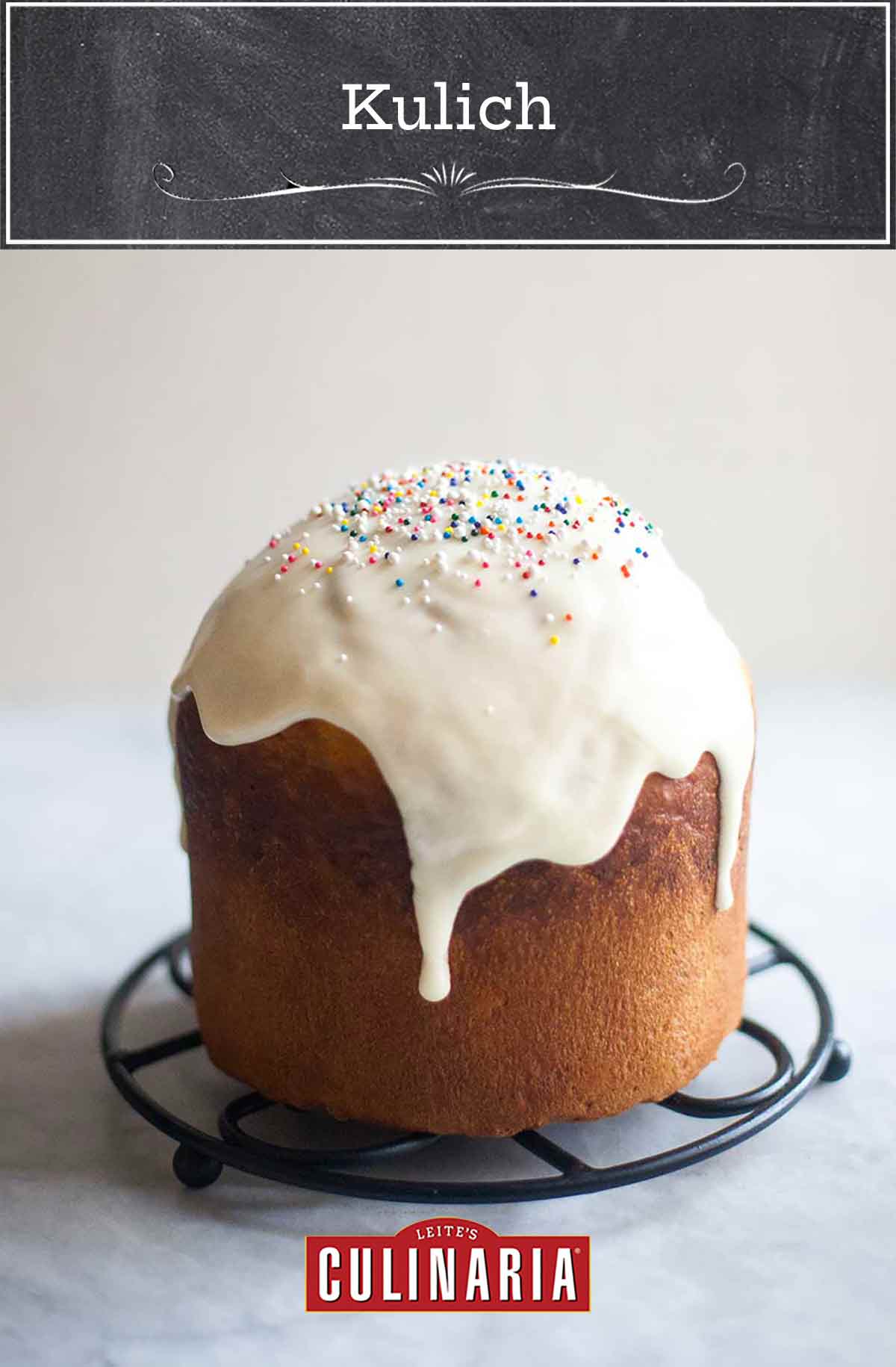


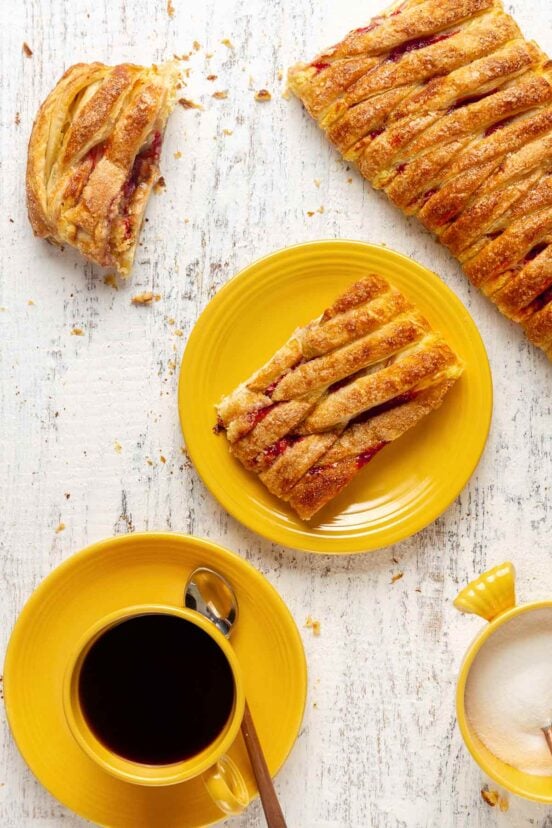
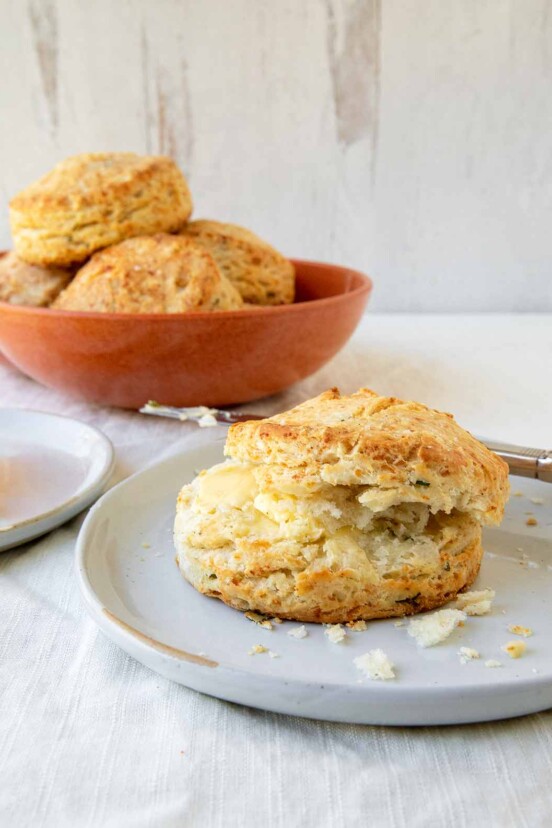
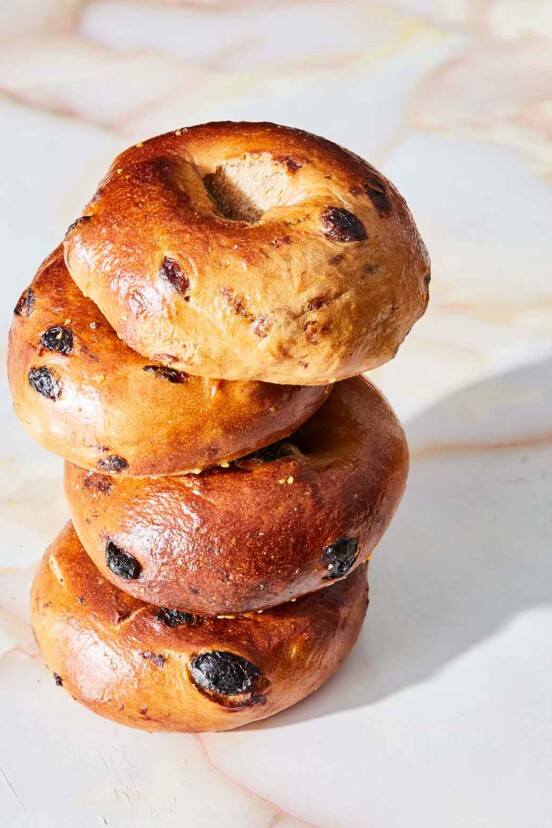









Genuine Russian trick for cooling and unmolding Kulich: set the coffee can containing Kulich on its side, and gently roll the can from time to time until cooled. This prevents the Kulich from sticking to the can, and also prevents the Kulich from losing any height. If you have a good recipe and cool it correctly, you will have a very tall and impressive Kulich.
FYI, the old Russians used to put the Kulich cans on feather pillows rather than cooling racks–I always assumed that this would cool them more slowly. Either way, make sure to turn the cooling Kulich cans now and then.
When you cut the Kulich, you cut the top “cap” off and set it aside. Slice individual slices from the top of the Kulich, and when you have sliced what you want, replace the “cap” on top of the Kulich. Keeps it fresh.
Don’t forget the icing, and the letters XB for Cristos Voskrese, done in a different color from the icing. My Mom always did purple for the letters.
That’s fascinating, Nadine! Thank you for those tips.
Where can one find a 3 lb coffee can? Recipe says 1 large panettone mold (6- to 7-inch | 15- to 18-cm diameter) or 1 empty #10 coffee can (3-pound | 1.5-kg capacity). I do not seem able to find such a big coffee can @ the grocery.
Regine, you can find 3-pound coffee cans at Costco under their private-label brand, Kirkland. You can also purchase it online, including at Amazon, which carries both the Kirkland brand as well as Chock Full o’Nuts. Hope that helps.
Hello Renee. This definitely help. Looking
forward to making if. Thanks so much.
Great, Regine, thanks for letting me know!
The Aleut Natives of Alaska are mostly all Russian Orthodox. There are wonderful blue domed churches all over the state. I have eaten Kulich from Kodiak to Adak! Though the exact recipes are different, especially with your expensive and rare ingredients, they are always domes=shaped and delicious! Never met one I didn’t like! Every Alaskan cookbook contains a Kulich recipe.
PS: Where in the world can you find one-pound metal coffee cans these days? I use a steamed bread/pudding mold sans lid. Kinda weird, but works for me!
Had no idea about the Russian Orthodox presence in Alaska! Curious to hear what you think of this Kulich. And as for the one-pound metal cans these days, they do still exist, although they’re not as common as they once were! We also sometimes see hominy in those size cans. Although your solution sounds like it works perfectly!